Higher ed faces a challenge greater than simply listing programs and facilities. Demonstrating tangible, real-world impact has become essential for colleges and universities seeking to connect with prospective students, parents, donors, and policymakers. Your website is your most powerful platform for this purpose. A well-designed, strategically structured site can showcase difference-making student stories, research outcomes, and institutional influence at scale. Let’s look at effective strategies for telling your institution’s story online, leveraging real-world examples and best practices from higher education.
A higher education website is both a digital front door and an ongoing showcase of your institution’s unique value. Stakeholders are increasingly searching for evidence instead of bold claims. They want student outcomes, faculty innovation, community partnership, and proof of economic impact. If your website falls short of communicating these, valuable opportunities may be lost.
We’ll outline some actionable approaches for:
Implementing these methods will create a more compelling story and strengthen your institution’s reputation and recruitment efforts.
First-person narratives have lasting power. They provide a window into the student experience that raw data simply cannot match. When website visitors encounter authentic student voices, they better understand the value of your programs and support systems.
Feature success stories as stand-alone profiles, video interviews, or podcasts. Incorporate photos, quotes, and even student-generated content.
Place student stories on relevant program pages or rotate them dynamically on your homepage.
Example:
Midwestern State University publishes stories like Amanda Story’s path to respiratory care. The narrative centers on her growth and readiness for a healthcare career, making it accessible to prospective students evaluating similar paths.
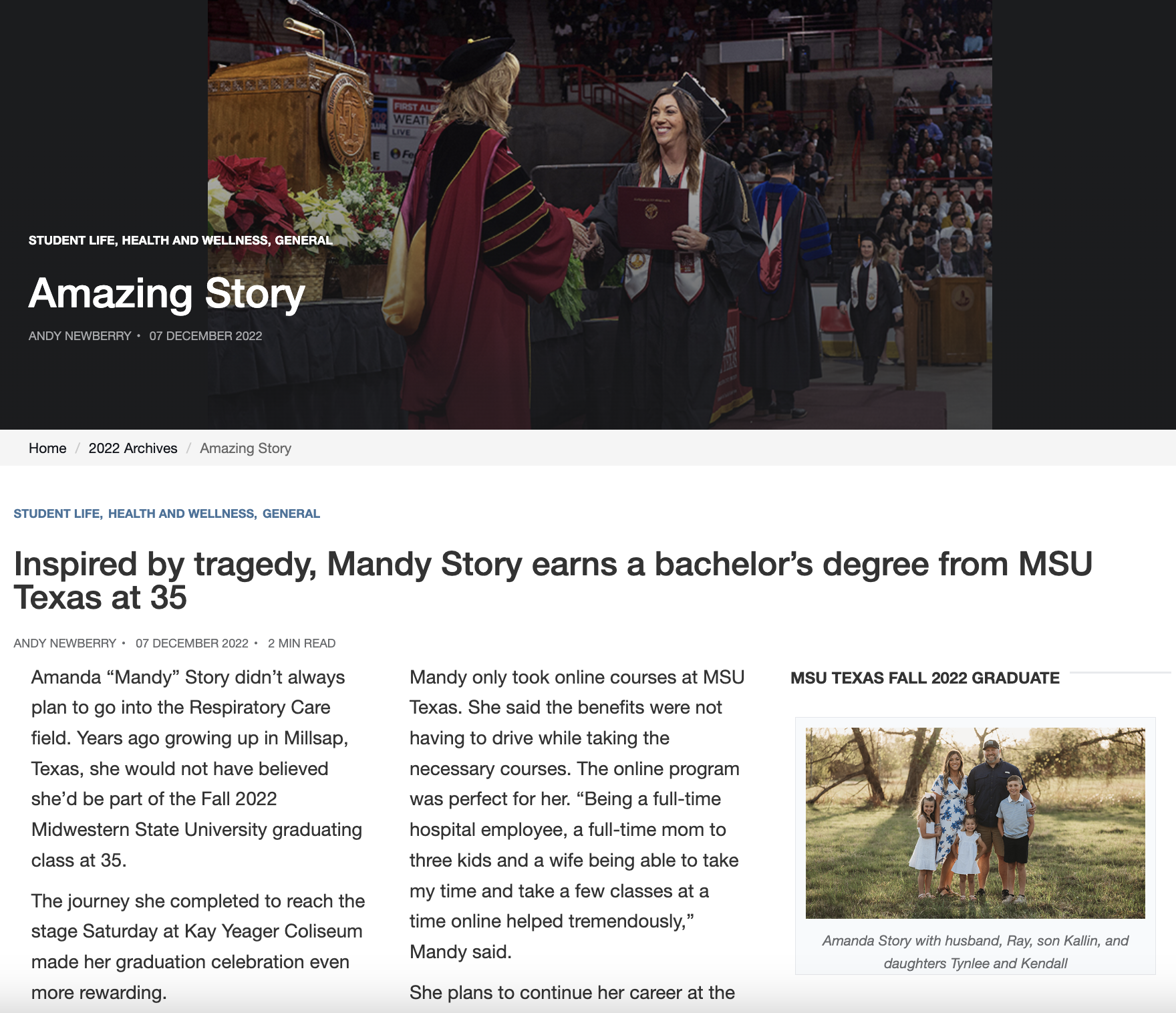
Thomas Edison State University maintains an expanding collection of diverse student profiles, each highlighting unique accomplishments. This approach creates a mosaic of authentic voices that appeals to a wide audience.
Faculty research can easily become siloed and lost in technical jargon. However, making these efforts understandable and relatable elevates your institution’s public standing and illustrates your contributions to societal progress.
Organize recent breakthroughs, ongoing projects, and faculty accolades. Translate complex studies into plain language summaries for broader audiences.
Show how faculty projects translate into real-world solutions, policy changes, health improvements, or social innovation.
Example:
University of the Incarnate Word’s annual Research Week demonstrates the power of bringing multidisciplinary presentations to a wider audience. By emphasizing community engagement, the institution positions its research as both high-caliber and socially meaningful.
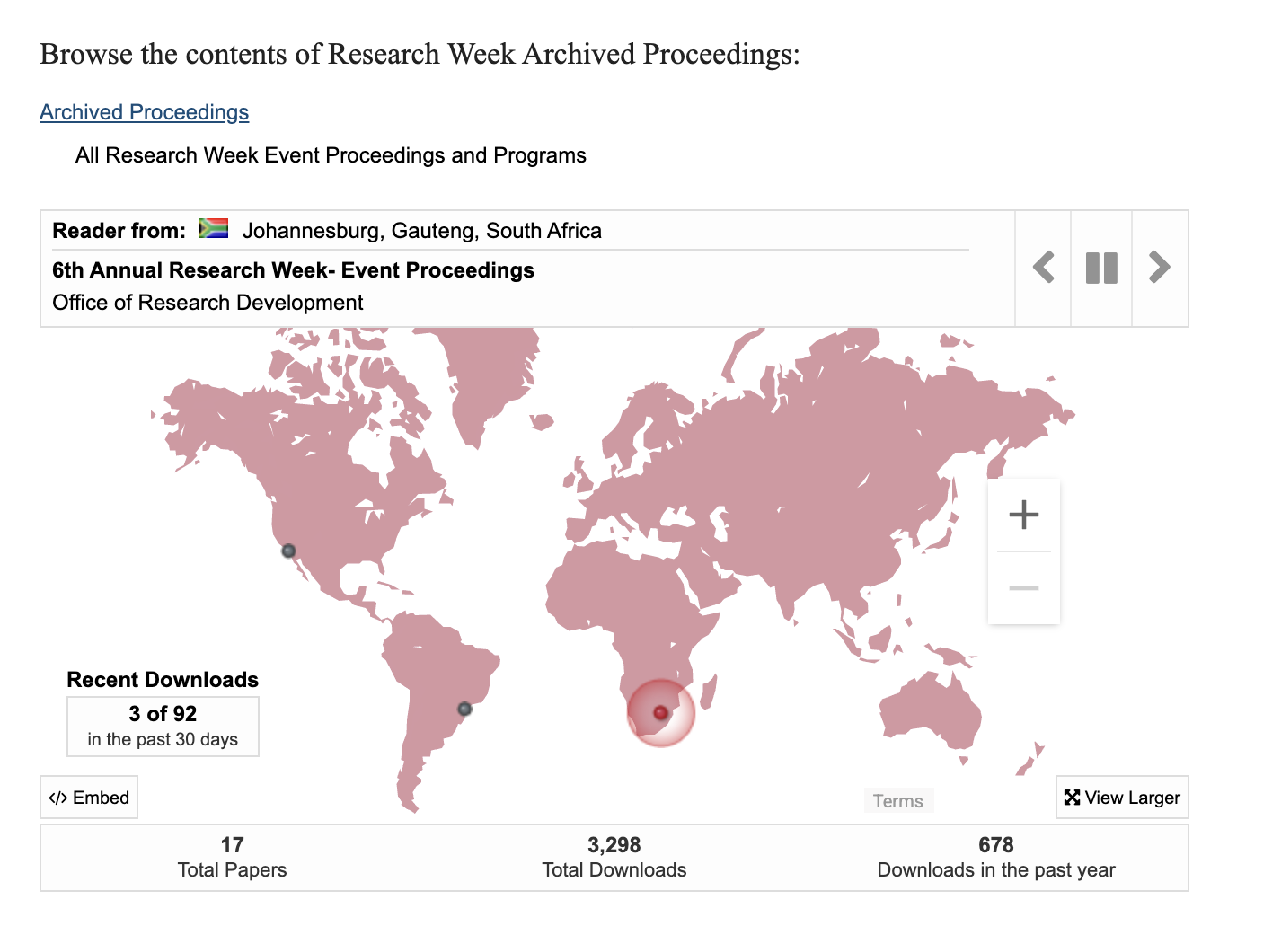
Midwestern University’s Research Day is another model. It brings together faculty and students to share their community-oriented projects, illustrating how academic inquiry drives impact beyond campus boundaries.
A “Community Impact” hub provides stakeholders with a comprehensive overview of your public service, partnerships, and outreach programs. This consolidates your institution’s role as a societal anchor and makes engagement efforts more visible.
Detail long-standing and new initiatives, community partnerships, and service learning projects.
Real voices and measurable outcomes show how your engagement uplifts neighborhoods or solves real problems.
Example:
University of Detroit Mercy highlights its architecture program’s integration of community service and curriculum. By doing so, the university demonstrates a return on investment for students and community members alike.
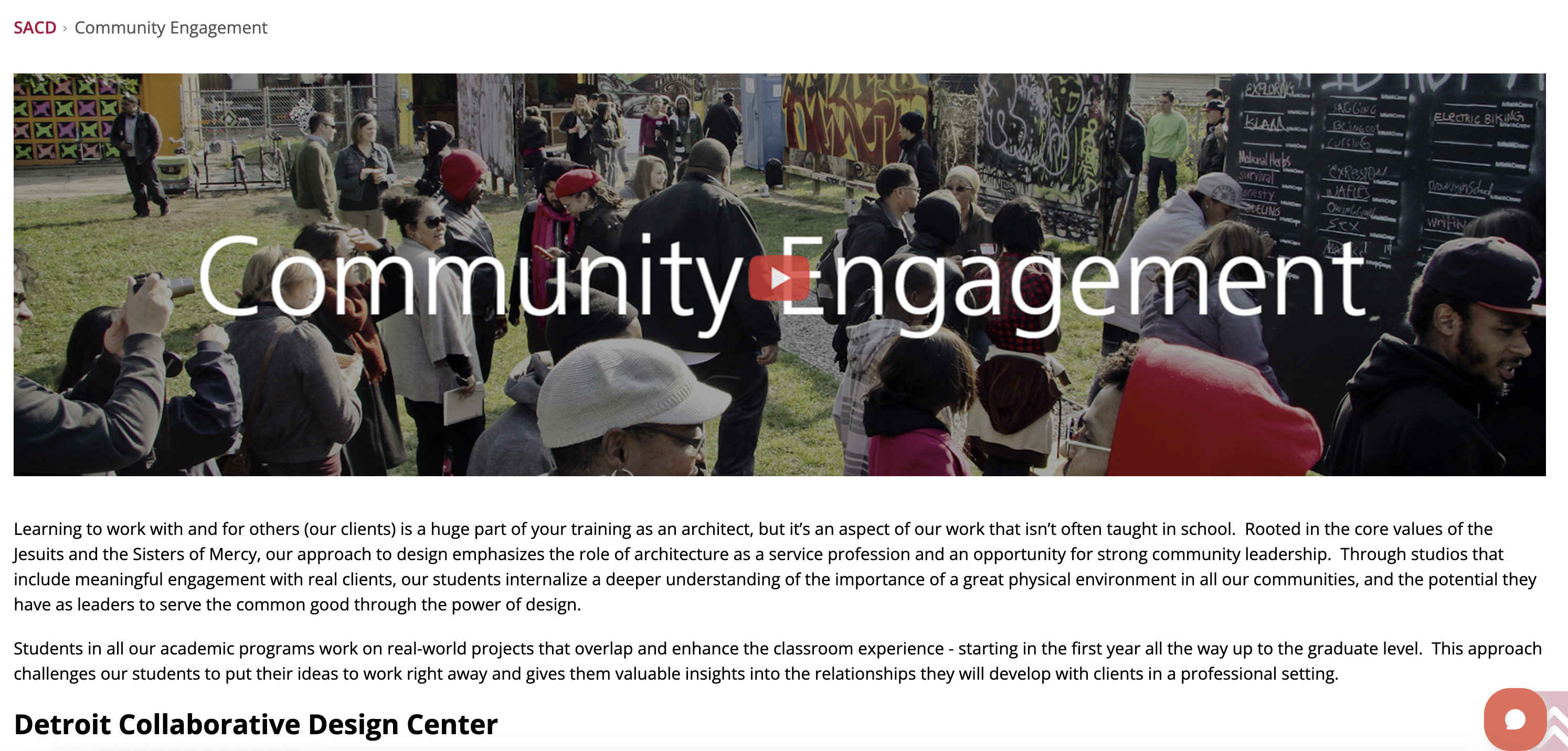
Southern Illinois University Edwardsville showcases its economic and physical expansion via stories like The Wedge Innovation Center, reinforcing its commitment to local development.
Static lists of exchange partners or alumni chapters fall flat. Interactive elements and visual storytelling paint a vivid picture of your far-reaching influence, both near and far.
Display study abroad opportunities, partner institutions, and alumni networks with clickable visuals.
Personal stories of students and alumni abroad bring your global strategy to life.
Example:
The University of St. Thomas elevates its study abroad and global engagement by sharing individual student journeys. For instance, Sara Benner’s move from junior college to majoring in biology is spotlighted as a transformation, empowered by a global-minded institution.
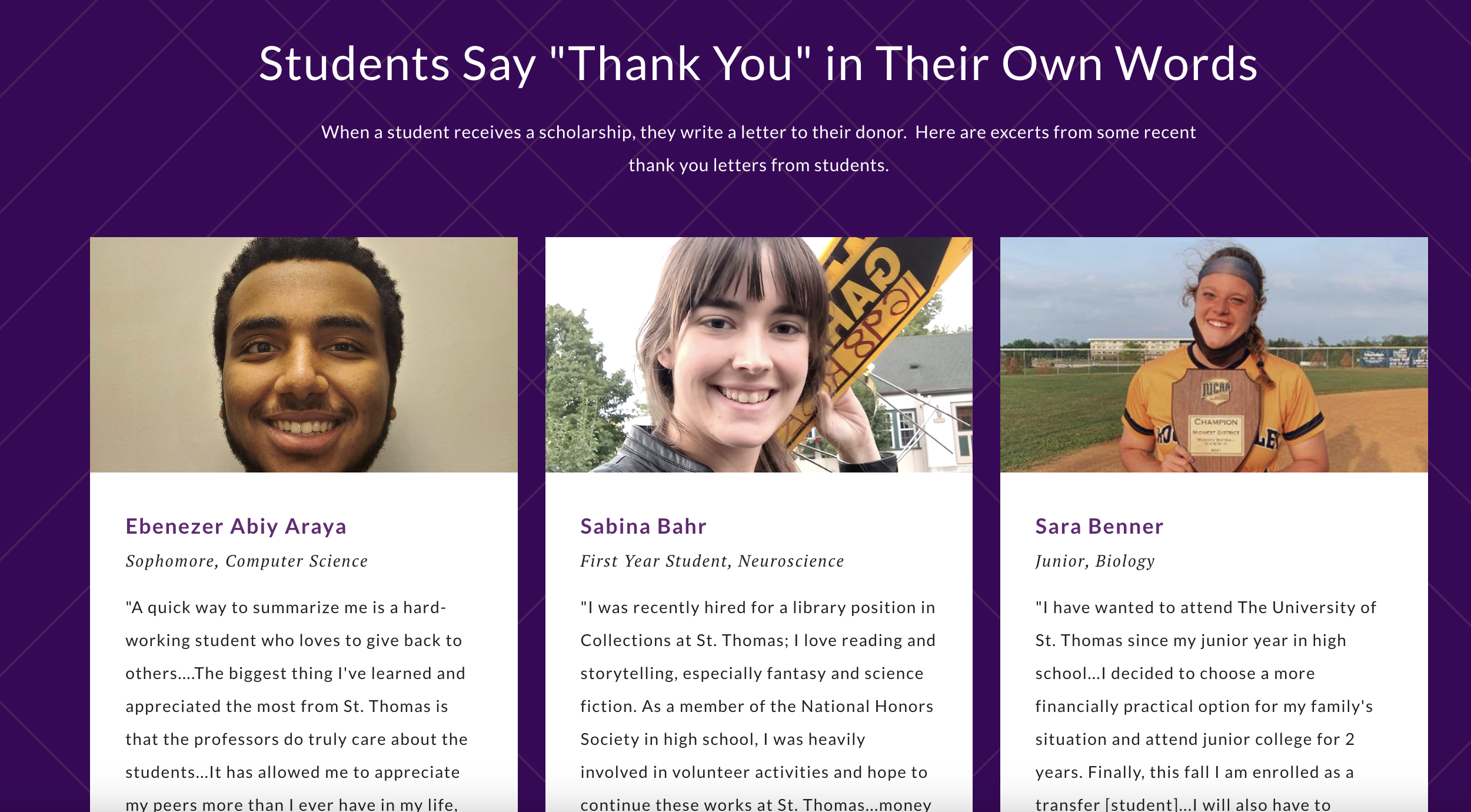
Stakeholders want proof that your institution fuels economic and workforce development. Concrete data, alumni success stories, and partnership spotlights can substantiate your value proposition.
Highlight career outcomes, industry partnerships, and economic impact studies.
Identify stories from healthcare, business, education, technology, and more.
Example:
Johnson County Community College supplies detailed information about its workforce solutions and continuing education. It connects programs to regional growth, emphasizing employer partnerships and career development.
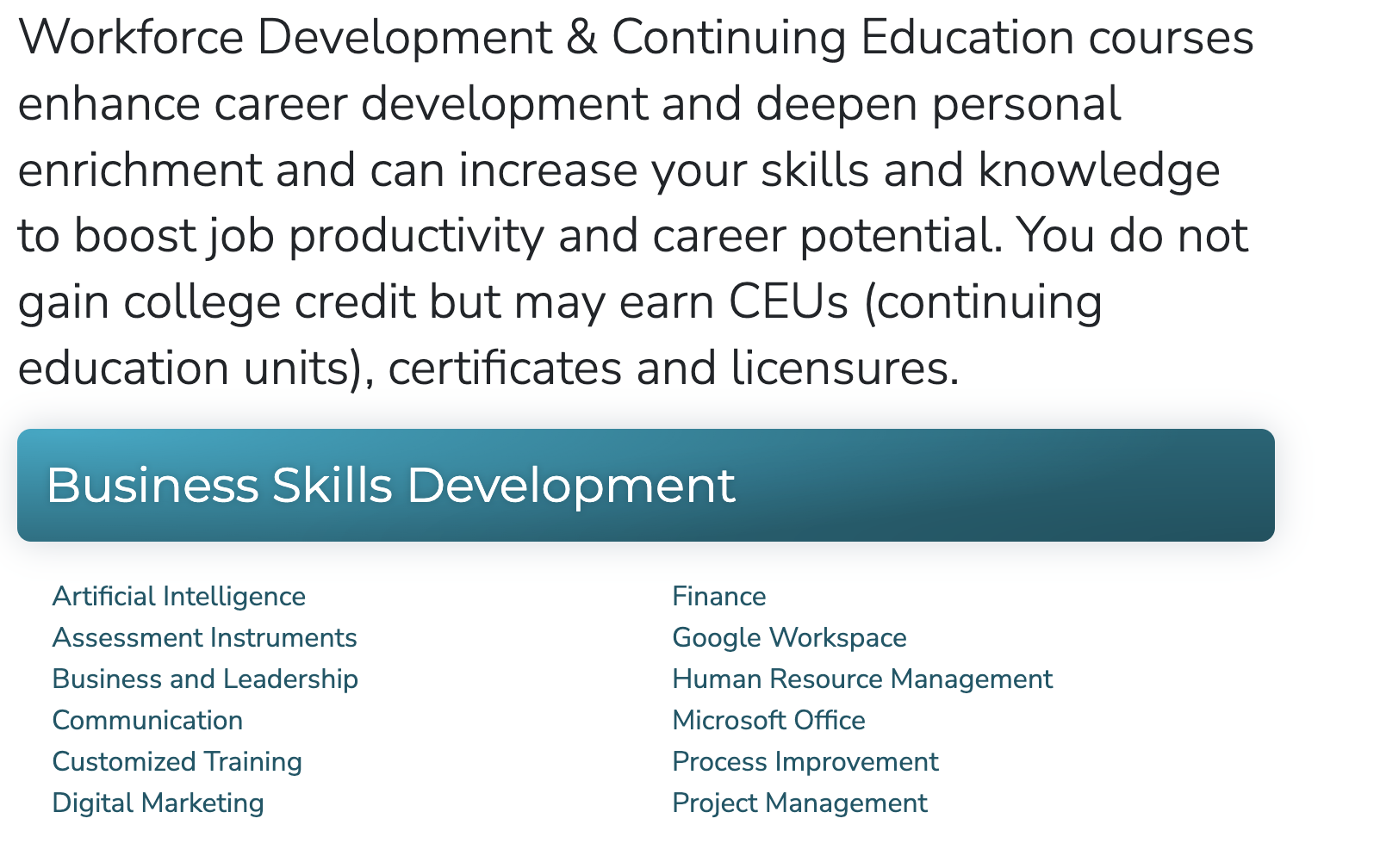
Sauk Valley Community College profiles its role in local business development via tailored training programs, further supporting its reputation as an economic engine for the community.
Rather than confining testimonials or stories to a single page, integrate them throughout program, faculty, admissions, and news sections. Consistent, varied story placement weaves a cohesive narrative that aligns with your institution’s core mission.
Keep content dynamic and draw repeat attention. Pro tip: Use Clive to show the most relevant stories to visitors based on their interests or location.
Ensure each department offers proof of impact, whether through student projects, fieldwork, or alumni stories.
Example:
College of Charleston’s “The College Today” serves as a dedicated platform for campus life, research, and alumni news. It’s interwoven throughout the main site, reinforcing core messages and keeping the institution’s story alive with frequent updates.
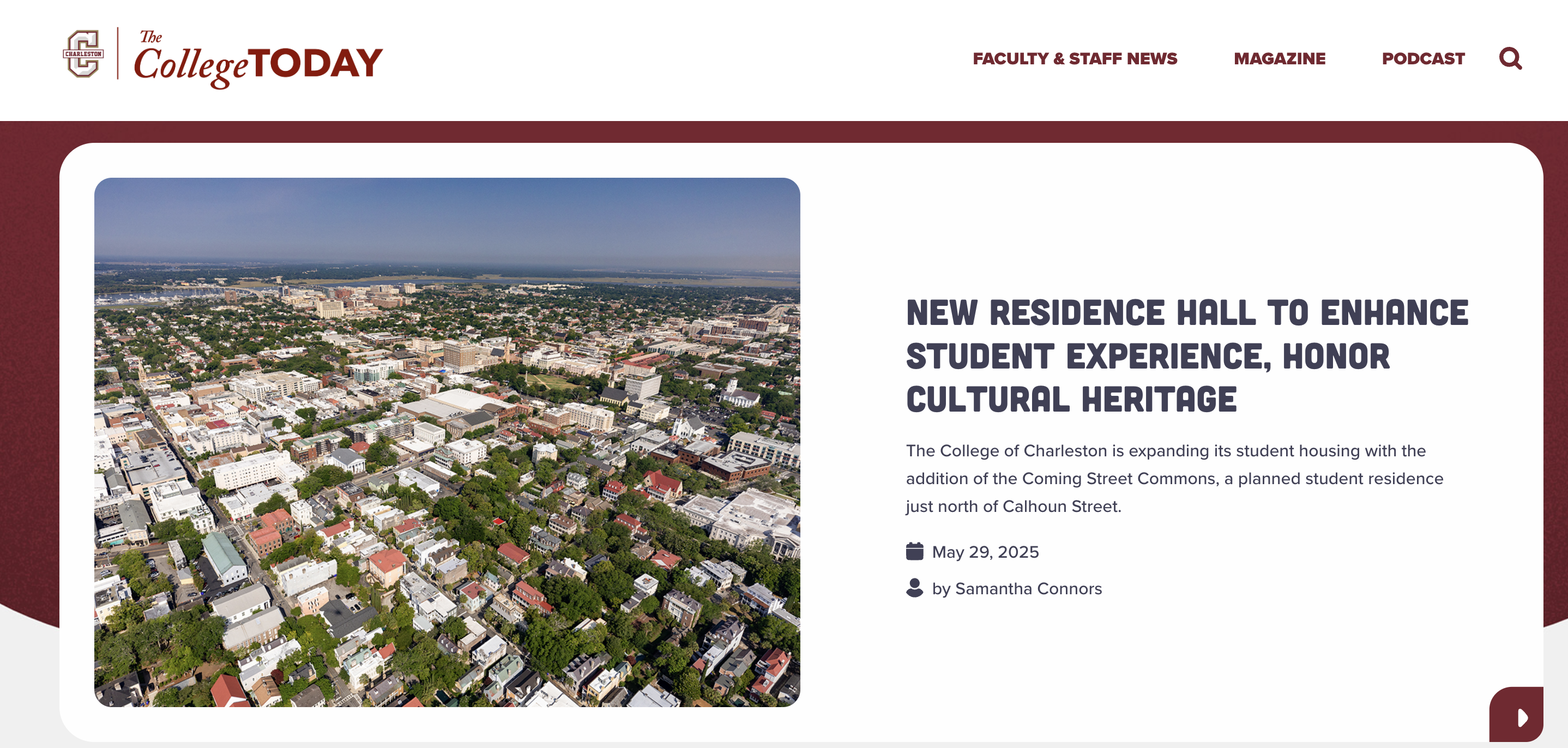
Your college or university website must go beyond static descriptions. Telling your story through authentic voices and measurable outcomes turns visitors into engaged advocates. By holistically showcasing student growth, faculty achievements, community engagement, and workforce leadership, with real examples and compelling UX design, you ensure your digital presence reflects the full value of your institution.
Next steps
Last Updated: Jul 31, 2025 12:00 AM